 Open Access
Open Access
ARTICLE
Chaotic Metaheuristics with Multi-Spiking Neural Network Based Cloud Intrusion Detection
1 Department of Management Information Systems, Faculty of Economics and Administration, King Abdulaziz University, Jeddah, 21589, Saudi Arabia
2 Department of Business Administration, Faculty of Economics and Administration, King Abdulaziz University, Jeddah, 21589, Saudi Arabia
* Corresponding Author: Mohammad Yamin. Email:
Computers, Materials & Continua 2023, 74(3), 6101-6118. https://doi.org/10.32604/cmc.2023.033677
Received 24 June 2022; Accepted 29 September 2022; Issue published 28 December 2022
Abstract
Cloud Computing (CC) provides data storage options as well as computing services to its users through the Internet. On the other hand, cloud users are concerned about security and privacy issues due to the increased number of cyberattacks. Data protection has become an important issue since the users’ information gets exposed to third parties. Computer networks are exposed to different types of attacks which have extensively grown in addition to the novel intrusion methods and hacking tools. Intrusion Detection Systems (IDSs) can be used in a network to manage suspicious activities. These IDSs monitor the activities of the CC environment and decide whether an activity is legitimate (normal) or malicious (intrusive) based on the established system’s confidentiality, availability and integrity of the data sources. In the current study, a Chaotic Metaheuristics with Optimal Multi-Spiking Neural Network-based Intrusion Detection (CMOMSNN-ID) model is proposed to secure the cloud environment. The presented CMOMSNN-ID model involves the Chaotic Artificial Bee Colony Optimization-based Feature Selection (CABC-FS) technique to reduce the curse of dimensionality. In addition, the Multi-Spiking Neural Network (MSNN) classifier is also used based on the simulation of brain functioning. It is applied to resolve pattern classification problems. In order to fine-tune the parameters relevant to the MSNN model, the Whale Optimization Algorithm (WOA) is employed to boost the classification results. To demonstrate the superiority of the proposed CMOMSNN-ID model, a useful set of simulations was performed. The simulation outcomes inferred that the proposed CMOMSNN-ID model accomplished a superior performance over other models with a maximum accuracy of 99.20%.Keywords
Cloud Computing (CC) has become an essential component in today’s world, especially after the outbreak of COVID-19 [1]. Most companies started moving towards cloud-based operations to sustain their commercial activities. The CC platform provides many services to its end-users free of cost, and it includes data storage and access from any place across the globe [2]. Both the concepts of CC and the distributed mechanisms are similar in nature. In distributed systems, the data gets dispersed in diverse locations, whereas it can be retrieved anywhere across the globe. Conversely, the entire data is stored in the cloud computing platform and can be accessed by any user from different places [3]. Network traffic analysis in cloud networks is one of the most significant tasks in cloud management. It is important to guarantee service quality, authenticate new services and applications, form precise network methods, and identify the variances in the cloud. The flow of the cloud computing network exhibits the behavioural patterns of the users in terms of service function or usage [4]. Traffic analysis and the detection of important application flows are important tools in using the model services and framing the paradigms for the identification of normal system functions.
The CC network experiences a number of security challenges. Though most security issues are fixed up to a certain extent [5], some security issues still exist. So, it is important to recognize these security issues before the transformation of institutions from conventional systems to cloud-based systems. The CC network needs two types of security models such as the network security model and the data security model, to protect itself from cyber-attacks [6]. Several menaces attack the cloud data centres and harm the cloud by snatching or stealing the data through cyberattacks. Various authors have proved that if an Intrusion Detection System (IDS) is connected with all sorts of cloud gadgets, the gadgets can remain secure with a few to less number of chances for cyberattacks. Cyber-attackers devise multiple types of attacks along with encryption and decryption methods to steal the data from the cloud servers [7]. These methods can abolish the data in a server, and every data may get corrupted. In such scenarios, a safe digital infrastructure can protect the cloud server from cyberattacks. The security aspects of the cloud server must be considered whenever saving huge volumes of the data in it. The cloud server can remain safe only when it contains a set of techniques, implementations and methods. As mentioned earlier, various authors have devised diverse data protection methods, processes and policies to ensure network cloud security [8]. However, IDS is the only optimal solution that can protect the networks. It is a system that controls uncertain actions and policy defilements in a cloud environment. It can identify the malware in the cloud and alert the cloud administrator whenever an invader tries to attack the cloud data centre [9]. The most important benefit of installing the IDSs in a cloud network is that the arriving actions in the network can be monitored, and such actions can be categorized as either invalid or valid. Certain IDSs are capable of providing instant replies to the administrator when malware is detected [10]. Various IDSs are accessible in antivirus products which identify the intrusions in the cloud servers.
Shyla et al. [11] proposed a new IDS by integrating the Leader-related K-means clustering (LKM) method and the Optimum Fuzzy Logic (FL) method. Initially, the input datasets were assembled into clusters with the help of the LKM method. Afterwards, the cluster data was provided to the Fuzzy Logic System (FLS). In this study, both abnormal and normal data were analysed by the FLS method, whereas it was trained with the help of the Grey Wolf Optimization (GWO) method to maximize the classification results. In literature [12], a Host-related IDS (H-IDS) was proposed to protect the Virtual Machines (VMs) in the cloud atmosphere. To end the security issues, a set of significant features was chosen initially for every class with the help of LR. Then, those values were enhanced with the help of the regularization method. Afterwards, several assaults were categorized by employing a blend of three distinct classifiers such as the Linear Discriminant Analysis (LDA), Neural Network (NN) and the Decision Tree (DT) method with a bagging technique for every class.
Chiba et al. [13] suggested the optimization of a famous soft computing tool, namely, Back Propagation Neural Network (BPNN), that is extensively utilized for IDS operations. The optimization was performed using the Improved Genetic Algorithm (IGA). The Genetic Algorithm (GA) method can be enhanced via the optimization strategies such as Fitness Value Hashing and Parallel Processing. These processes minimize the duration of the performance, its convergence period and the processing power. Further, the momentum term and the learning rate were amongst the most-related variables that affect the classification performance of the BPNN method. Further, the IGA approach was leveraged to identify the optimum or near optimum values for two such variables to ensure a low false alarm rate, a high detection rate and maximum accuracy. Jaber et al. [14] suggested a new IDS combining the Fuzzy c-means Clustering (FCM) method and the Support Vector Machine (SVM) approach to improve the accuracy of the detection mechanism in the cloud computing environment. The presented system was implemented and compared against the existing systems. In the study conducted earlier [15], a next-gen cloud IDS was proposed at the hypervisor layer and was evaluated for the detection of the depraved actions in the CC environment. The cloud IDS employed a hybrid method combining the FCM clustering technique and the Back Propagation ANN technique to enhance the detection accuracy of the cloud IDS. The suggested system outcomes were compared and contrasted against the classic FCM method and the K-means algorithm.
The current study proposes a Chaotic Metaheuristics with Optimal Multi-Spiking Neural Network-based Intrusion Detection (CMOMSNN-ID) method to secure the cloud environment. The presented CMOMSNN-ID model involves the Chaotic Artificial Bee Colony Optimization-based Feature Selection (CABC-FS) technique to reduce the curse of dimensionality. In addition, the Multi-Spiking Neural Network (MSNN) classifier is also used based on the simulation of brain functioning. It is applied to resolve pattern classification problems. In order to fine-tune the parameters relevant to the MSNN model, the Whale Optimization Algorithm (WOA) is employed to boost the classification results. In order to demonstrate the superiority of the CMOMSNN-ID model, a useful set of simulations was conducted.
In this study, a new CMOMSNN-ID technique has been proposed to detect and recognize intrusions in a secure cloud environment. The presented CMOMSNN-ID model involves CABC-FS technique to reduce the curse of dimensionality. Following, the WOA-MSNN classifier is used to overcome the pattern classification problems. Fig. 1 depicts the overall process of the proposed CMOMSNN-ID approach.

Figure 1: Overall process of the CMOMSNN-ID approach
2.1 Steps Involved in CABC-FS Model
In this study, the presented CMOMSNN-ID model involves CABC-FS technique to reduce the curse of dimensionality. The study introduces an improved ABC approach to fetch the pertinent genes from the COVID-19 transcription dataset. The ABC approach is a nature-inspired optimization technique that was developed on the basis of the foraging behaviour of the swarming honey bees [16]. Karaboga recommended this method since it exhibited excellent developments in the outcomes. The presented method achieved remarkable outcomes for a wide-range of optimization issues. In general, the foraging honey bees are of three types such as scouts, worker bees and onlooker bees. The worker bees exploit the food supplies. Then, a novel candidate solution is produced and represented by each group of honey bees. From dissimilar food sources, nectar is added to the hive. The onlooker bees wait in the hive for data to be shared by the worker bees about the food sources. Based on the data, the onlooker bees explore for food supplies by becoming scout bees. Here, the solution is abandoned by the working bees, if the food source is already exhausted. Next, the scout bees randomly search for novel food sources nearby the hive without utilizing any type of data. Once the scouts find a novel food source, it becomes worker bees. Each scout can become an adventurer and search for food without any specific direction, whereas the scouts are free to explore different kinds of food sources. As a result, the scouts might unknowingly find a rich and a completely-unknown food source too. In this situation, a new solution is proposed by the neighbouring operator to employ bees as well as the onlooker bees. In order to increase the exploitation perspective of the ABC approach, a local seeking process is employed for the solution, which is attained by the neighbouring operator with some probability. Besides the execution of the algorithm, it is also upgraded additionally through the addition of two novel components, which in turn overcomes the shortcomings of the ABC approach.

To enhance the performance of the ABC algorithm, the CABC algorithm is derived with the help of a chaotic logistic map. Then, the CABC algorithm derives a fitness function to handle the trade-off amongst the chosen features and achieve classification accuracy by means of the chosen features. The fitness function can be determined as given below.
Here,
2.2 Intrusion Detection Using MSNN Model
In order to identify and classify the intrusions, the MSNN model is exploited. The MSNN classification technique is utilized as a base classification method [17]. The SNN classification approach utilizes the Least-Squares approach to approximate the synaptic weight alterations that are required to induce the spikes at the chosen output spike time
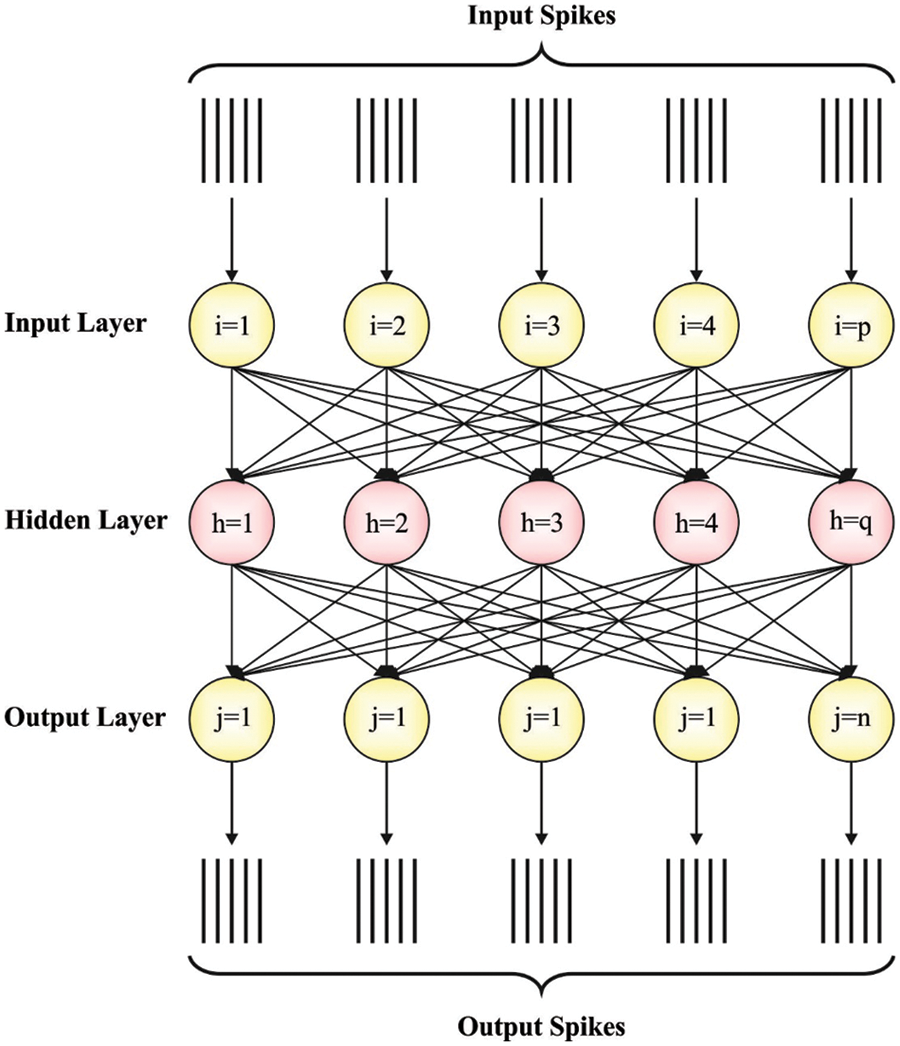
Figure 2: Structure of the MSNN technique
A spike locality model is also employed in the determination of a group of weights to adjust the provided resultant spike time t to minimize the impact of the learning interferences.
Here,
Here,
Here,
Here,
2.3 Parameter Optimization Using WOA
In order to fine tune the parameters involved in the MSNN model, the WOA approach is employed to boost the classification results. WOA is a metaheuristic technique that was developed on the basis of Humpback whales [18]. In the presented method, the optimization algorithm initiates the function by randomly generating the whale population. Then, it tries to find the optimal location of the prey. Then, the position is either added or improved through a bubble-net or an encompassing mechanism. In encompassing methodology, the Humpback whales enhance the existing position on the basis of the optimal position given below.
In the above-mentioned equations, the distance between the location vector of the prey
Let r be a random vector with a length
In Eq. (11),
Whales swim nearby the prey by following a spiral-shaped path and a shrinking circle simultaneously.
In Eq. (12),
In this expression,
The proposed CMOMSNN-ID model was experimentally validated under two aspects, namely, binary classification and multi-classification. Table 1 provides an overview of the binary classification dataset, which has a total of 2,500 samples. It includes 500 samples under normal class and 2,000 samples under abnormal class. Fig. 3 shows the confusion matrices generated by the proposed CMOMSNN-ID model on the binary class classification dataset.


Figure 3: Confusion matrices of the CMOMSNN-ID approach under binary class classification (a) 80% of TRS, (b) 20% of TSS, (c) 70% of TRS, and (d) 30% of TSS
With 80% of the Training Set (TRS), the proposed CMOMSNN-ID model recognized 537 samples as normal and 1,607 samples as abnormal. In addition, on 20% of the Testing Set (TSS), the presented CMOMSNN-ID technique categorized 113 samples under normal class and 383 samples under abnormal class. Along with that, on 70% of TRS, the CMOMSNN-ID method recognized 347 samples as normal and 1,388 samples as abnormal.
Table 2 and Fig. 4 demonstrate the overall classification outcomes attained by the CMOMSNN-ID model on binary class classification. With 80% TRS, the proposed CMOMSNN-ID model achieved an average

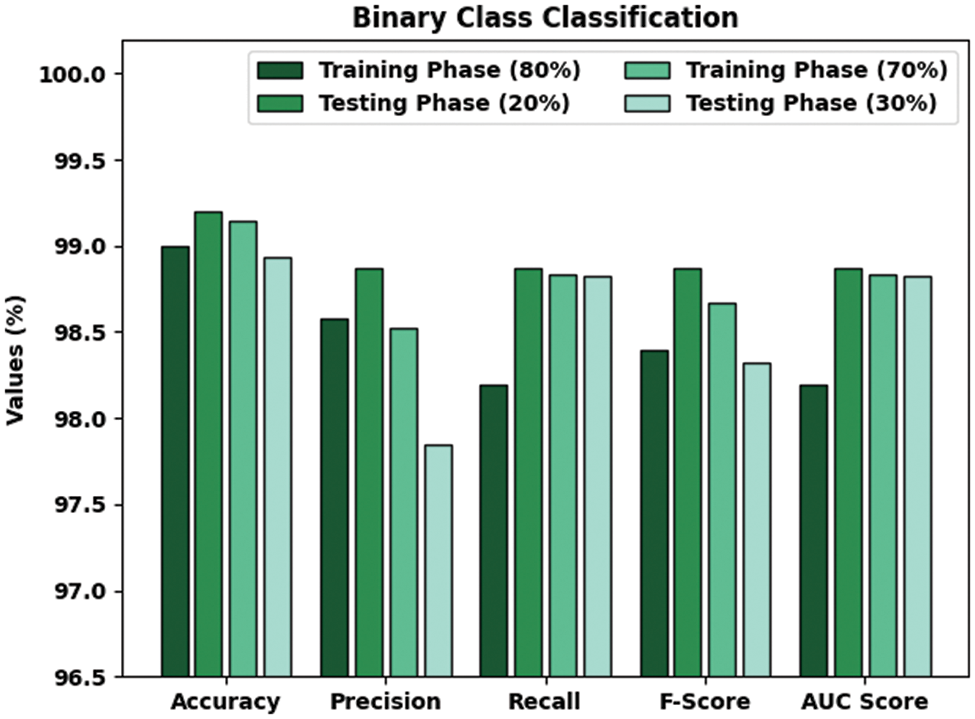
Figure 4: Analytical results of the CMOMSNN-ID approach using binary class classification dataset
Eventually, with 70% TRS, the proposed CMOMSNN-ID model granted an average
Both Training Accuracy (TA) and Validation Accuracy (VA) values, acquired by the proposed CMOMSNN-ID method on binary class classification dataset, are demonstrated in Fig. 5. The experimental outcomes denote that the proposed CMOMSNN-ID algorithm gained the maximal TA and VA values while the VA values were higher than the TA values.
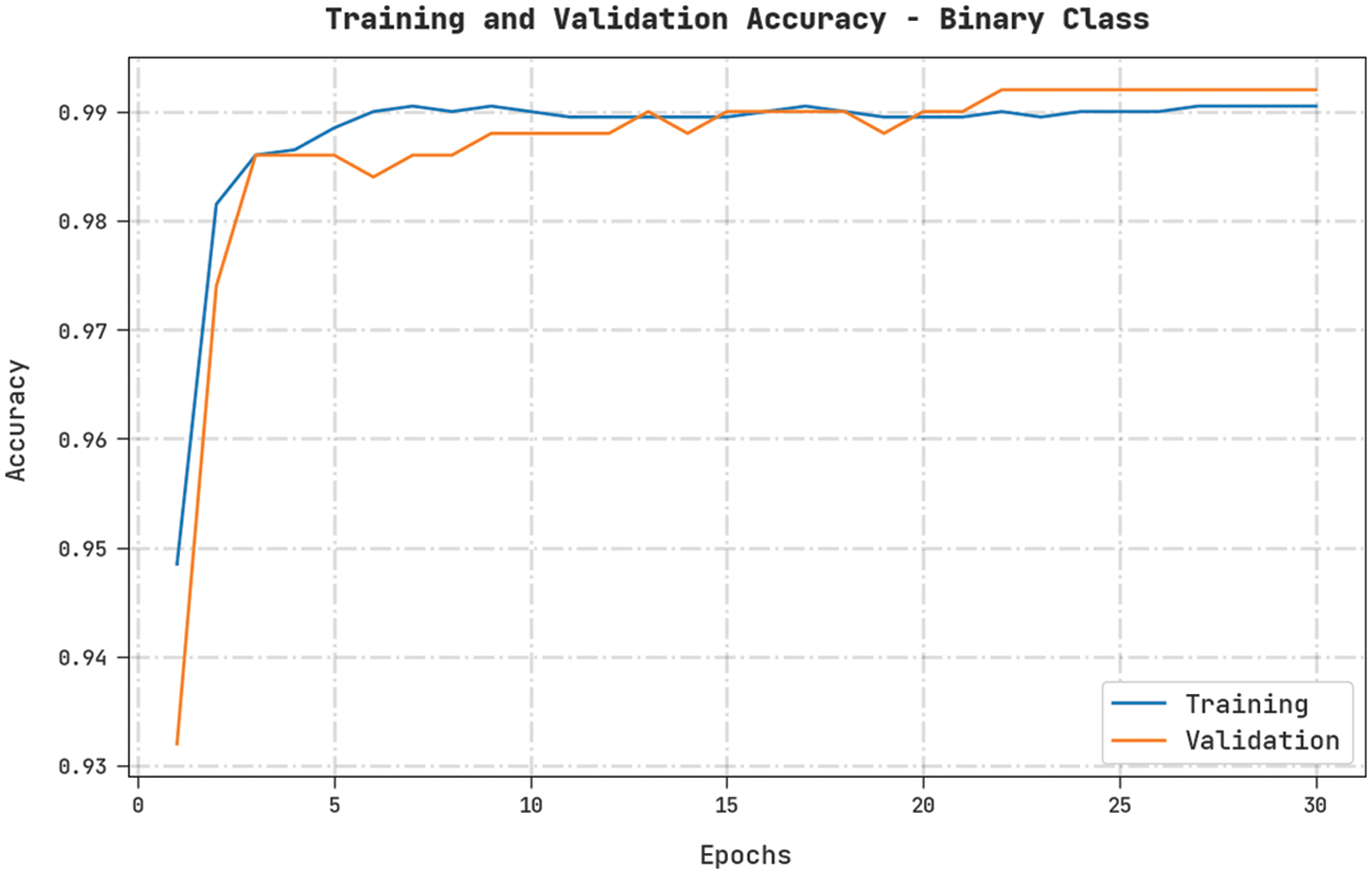
Figure 5: TA and VA analyses results of the CMOMSNN-ID approach under binary class classification dataset
Both Training Loss (TL) and Validation Loss (VL) values, achieved by the proposed CMOMSNN-ID approach on binary class classification dataset, are portrayed in Fig. 6. The experimental outcomes imply that the proposed CMOMSNN-ID algorithm established the minimal TL and VL values whereas the VL values were lower than the TL values.
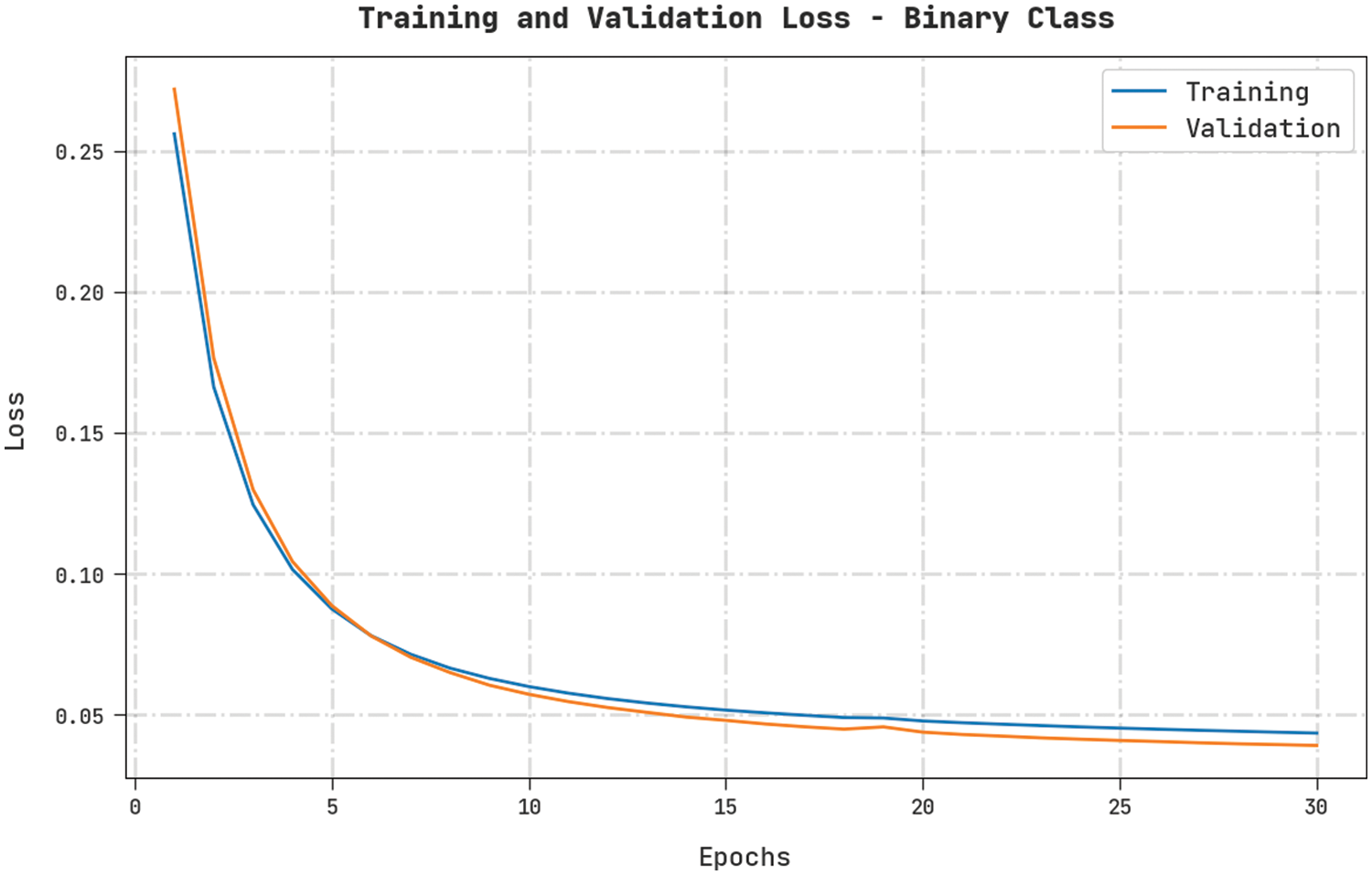
Figure 6: TL and VL analyses results of the CMOMSNN-ID approach under binary class classification dataset
Table 3 shows the details about Multiclass classification dataset which has a collection of 2,500 samples. The dataset includes 500 samples under normal class, 500 samples under Denial of Service (DoS) class, 500 samples under Probe class, 500 samples under Root to Local (R2L) class and 500 samples under User to Root (U2R) class.

Fig. 7 portrays the confusion matrices generated by the CMOMSNN-ID method upon Multiclass classification dataset. On 80% TRS, the proposed CMOMSNN-ID model categorized 383 samples under normal class, 390 samples under DoS class, 375 samples under Probe class, 400 samples underR2L class and 354 samples underU2R class. Moreover, on 20% TSS, the presented CMOMSNN-ID model classified 103 samples under normal class, 88 samples under DoS class, 109 samples under Probe class, 86 samples under R2L class and 94 samples under U2R class respectively. Along with that, on 70% TRS, the proposed CMOMSNN-ID method categorized 383 samples under normal class, 326 samples under DoS class, 342 samples under Probe class, 327 samples under R2L class and 348 samples under U2R class.
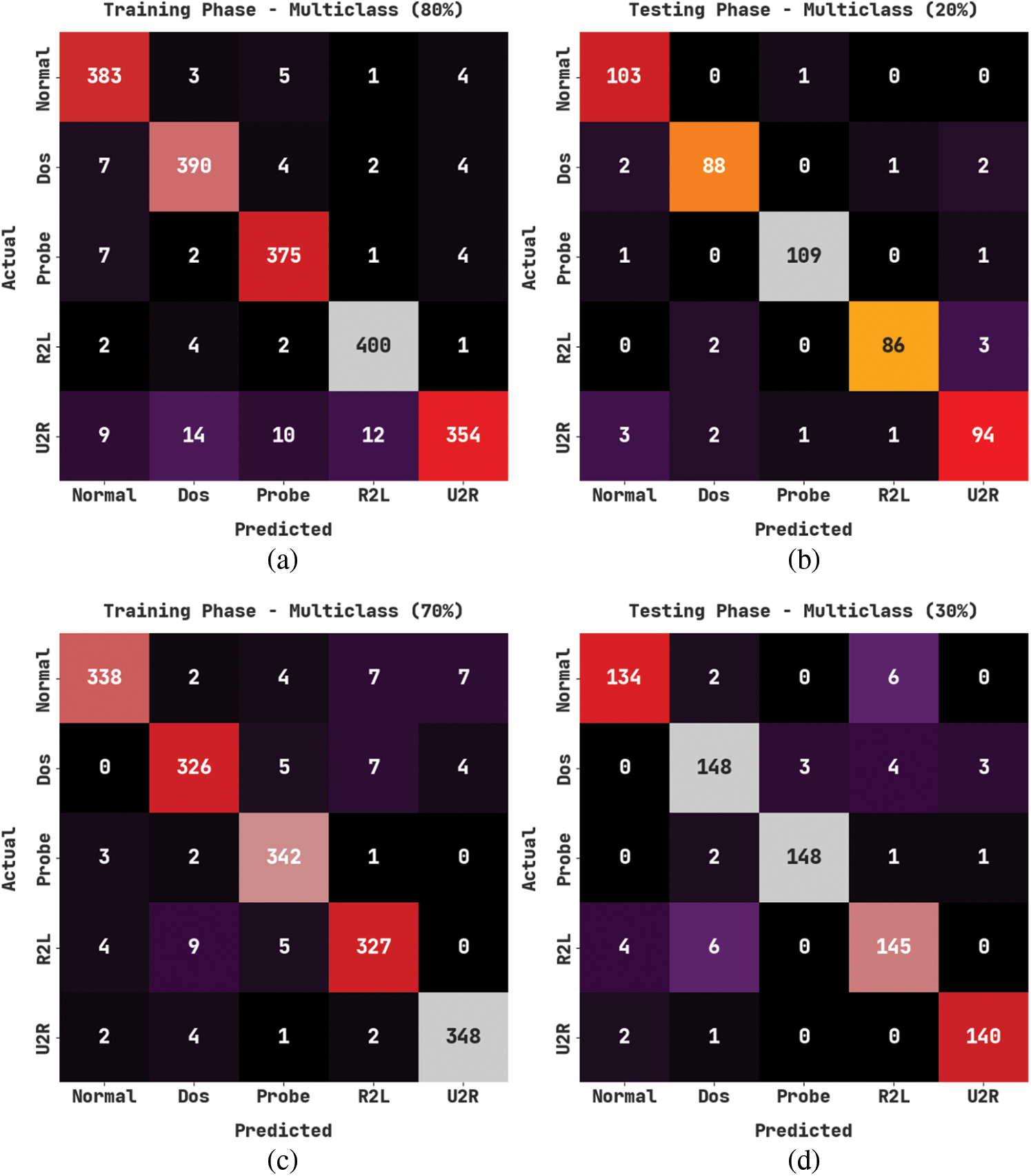
Figure 7: Confusion matrices of the CMOMSNN-ID approach under Multiclass classification dataset (a) 80% of TRS, (b) 20% of TSS, (c) 70% of TRS, and (d) 30% of TSS
Table 4 and Fig. 8 show the overall classification outcomes achieved by the CMOMSNN-ID model on Multiclass classification dataset. With 80% TRS, the proposed CMOMSNN-ID method offered an average

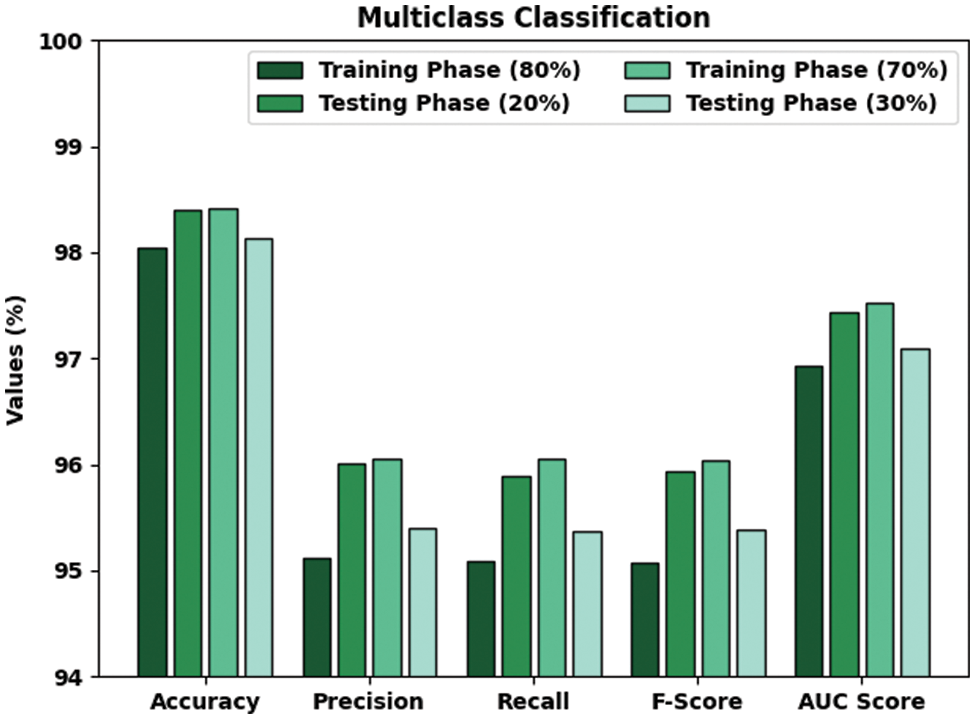
Figure 8: Analytical results of the CMOMSNN-ID approach using Multiclass classification dataset
Both TA and VA values, obtained by the proposed CMOMSNN-ID method on Multiclass classification dataset, are shown in Fig. 9. The experimental outcomes imply that the proposed CMOMSNN-ID technique achieved the maximal TA and VA values whereas the TA values were higher than the TA values.

Figure 9: TA and VA analyses results of the CMOMSNN-ID approach under Multiclass classification dataset
Both TL and VL values, achieved by the proposed CMOMSNN-ID approach on Multiclass classification dataset, are exhibited in Fig. 10. The experimental outcomes infer that the proposed CMOMSNN-ID algorithm accomplished the least TL and VL values whereas the VL values were lower than the TL values.

Figure 10: TL and VL analyses results of the CMOMSNN-ID approach under Multiclass classification dataset
To validate the enhanced performance of the proposed CMOMSNN-ID model, a comparative assessment was conducted and the results are shown in Table 5 and Fig. 11. With respect to

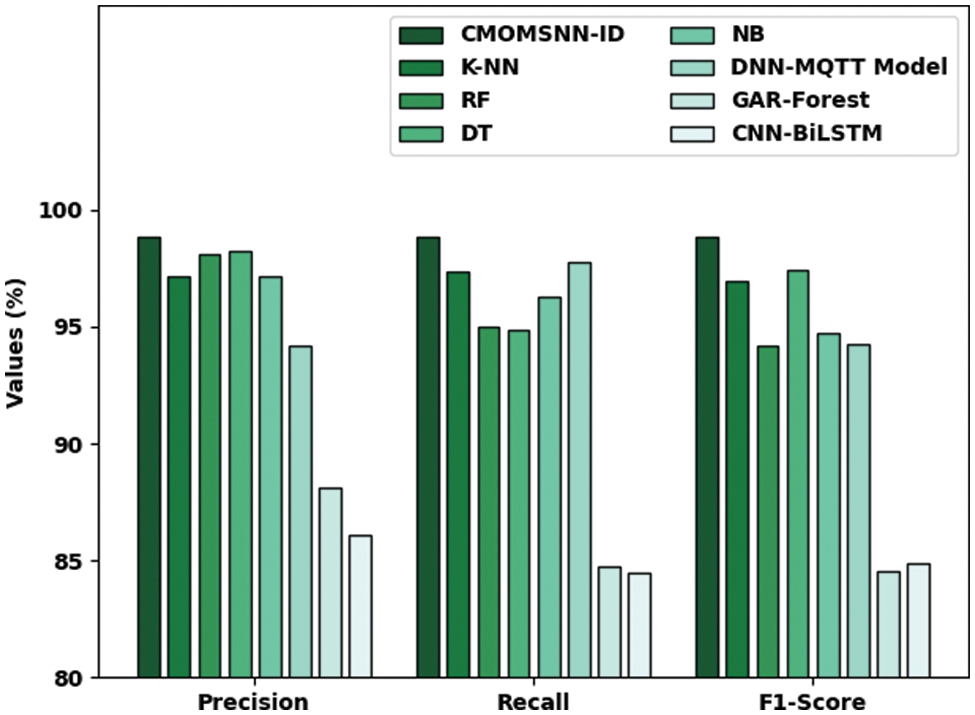
Figure 11: Comparative analysis results of the CMOMSNN-ID approach and other existing methodologies
In this study, a new CMOMSNN-ID technique has been developed for detection and recognition of the intrusions in a secure cloud environment. The presented CMOMSNN-ID model involves CABC-FS technique to reduce the curse of dimensionality. Followed by, the MSNN classifier is used based on the simulation of brain functioning. It can be applied to resolve the pattern classification problems. In order to fine-tune the parameters relevant to MSNN model, the WOA approach is employed to boost the classification results. In order to demonstrate the superiority of the proposed CMOMSNN-ID model, a useful set of simulations was conducted. The simulation outcomes confirmed that the proposed CMOMSNN-ID model accomplished superior performance over other models. As a part of future scope, the classification performance can be boosted further using the outlier detection and the clustering approaches.
Funding Statement: This research work was funded by Institutional Fund Projects under Grant No. (IFPHI-099-120-2020). Therefore, authors gratefully acknowledge technical and financial support from the Ministry of education and King Abdulaziz University, DSR, Jeddah, Saudi Arabia.
Conflicts of Interest: The authors declare that they have no conflicts of interest to report regarding the present study.
References
1. O. Achbarou, M. A. El Kiram, O. Bourkoukou and S. Elbouanani, “A new distributed intrusion detection system based on multi-agent system for cloud environment,” International Journal of Communication Networks and Information Security, vol. 10, no. 3, pp. 526, 2018. [Google Scholar]
2. V. Chang, L. Golightly, P. Modesti, Q. A. Xu, L. M. T. Doan et al. “A survey on intrusion detection systems for fog and cloud computing,” Future Internet, vol. 14, no. 3, pp. 89, 2022. [Google Scholar]
3. D. G. Singh, R. Priyadharshini and E. J. Leavline, “Cuckoo optimisation based intrusion detection system for cloud computing,” International Journal of Computer Network and Information Security, vol. 10, no. 11, pp. 42–49, 2018. [Google Scholar]
4. V. Balamurugan and R. Saravanan, “Enhanced intrusion detection and prevention system on cloud environment using hybrid classification and OTS generation,” Cluster Computing, vol. 22, no. S6, pp. 13027–13039, 2019. [Google Scholar]
5. P. Wanda, “A survey of intrusion detection system,” International Journal of Informatics and Computation, vol. 1, no. 1, pp. 1, 2020. [Google Scholar]
6. P. Deshpande, S. C. Sharma, S. K. Peddoju and S. Junaid, “HIDS: A host based intrusion detection system for cloud computing environment,” International Journal of System Assurance Engineering and Management, vol. 9, no. 3, pp. 567–576, 2018. [Google Scholar]
7. Z. Liu, B. Xu, B. Cheng, X. Hu and M. Darbandi, “Intrusion detection systems in the cloud computing: A comprehensive and deep literature review,” Concurrency and Computation: Practice and Experience, vol. 34, no. 4, pp. e6646, 2022. [Google Scholar]
8. S. Krishnaveni, S. Sivamohan, S. S. Sridhar and S. Prabakaran, “Efficient feature selection and classification through ensemble method for network intrusion detection on cloud computing,” Cluster Computing, vol. 24, no. 3, pp. 1761–1779, 2021. [Google Scholar]
9. S. Devi and D. A. K. Sharma, “Understanding of intrusion detection system for cloud computing with networking system,” International Journal of Computer Science and Mobile Computing, vol. 9, no. 3, pp. 19–25, 2020. [Google Scholar]
10. M. M. Sakr, M. A. Tawfeeq and A. B. El-Sisi, “Network intrusion detection system based pso-svm for cloud computing,” International Journal of Computer Network and Information Security, vol. 11, no. 3, pp. 22–29, 2019. [Google Scholar]
11. S. I. Shyla and S. S. Sujatha, “Cloud security: Lkm and optimal fuzzy system for intrusion detection in cloud environment,” Journal of Intelligent Systems, vol. 29, no. 1, pp. 1626–1642, 2019. [Google Scholar]
12. E. Besharati, M. Naderan and E. Namjoo, “LR-HIDS: Logistic regression host-based intrusion detection system for cloud environments,” Journal of Ambient Intelligence and Humanized Computing, vol. 10, no. 9, pp. 3669–3692, 2019. [Google Scholar]
13. Z. Chiba, N. Abghour, K. Moussaid, A. El Omri and M. Rida, “New anomaly network intrusion detection system in cloud environment based on optimized back propagation neural network using improved genetic algorithm,” International Journal of Communication Networks and Information Security, vol. 11, no. 1, pp. 61–84, 2019. [Google Scholar]
14. A. N. Jaber and S. U. Rehman, “FCM–SVM based intrusion detection system for cloud computing environment,” Cluster Computing, vol. 23, no. 4, pp. 3221–3231, 2020. [Google Scholar]
15. P. Sharma, J. Sengupta and P. K. Suri, “WLI-FCM and artificial neural network based cloud intrusion detection system,” International Journal of Advanced Networking and Applications, vol. 10, no. 1, pp. 3698–3703, 2018. [Google Scholar]
16. I. J. Jacob and P. E. Darney, “Artificial bee colony optimization algorithm for enhancing routing in wireless networks,” Journal of Artificial Intelligence and Capsule Networks, vol. 3, no. 1, pp. 62–71, 2021. [Google Scholar]
17. S. G. Dastidar and H. Adeli, “A new supervised learning algorithm for multiple spiking neural networks with application in epilepsy and seizure detection,” Neural Networks, vol. 22, no. 10, pp. 1419–1431, 2009. [Google Scholar]
18. I. Aljarah, H. Faris and S. Mirjalili, “Optimizing connection weights in neural networks using the whale optimization algorithm,” Soft Computing, vol. 22, no. 1, pp. 1–15, 2016. [Google Scholar]
Cite This Article
 Copyright © 2023 The Author(s). Published by Tech Science Press.
Copyright © 2023 The Author(s). Published by Tech Science Press.This work is licensed under a Creative Commons Attribution 4.0 International License , which permits unrestricted use, distribution, and reproduction in any medium, provided the original work is properly cited.


 Submit a Paper
Submit a Paper Propose a Special lssue
Propose a Special lssue View Full Text
View Full Text Download PDF
Download PDF Downloads
Downloads
 Citation Tools
Citation Tools